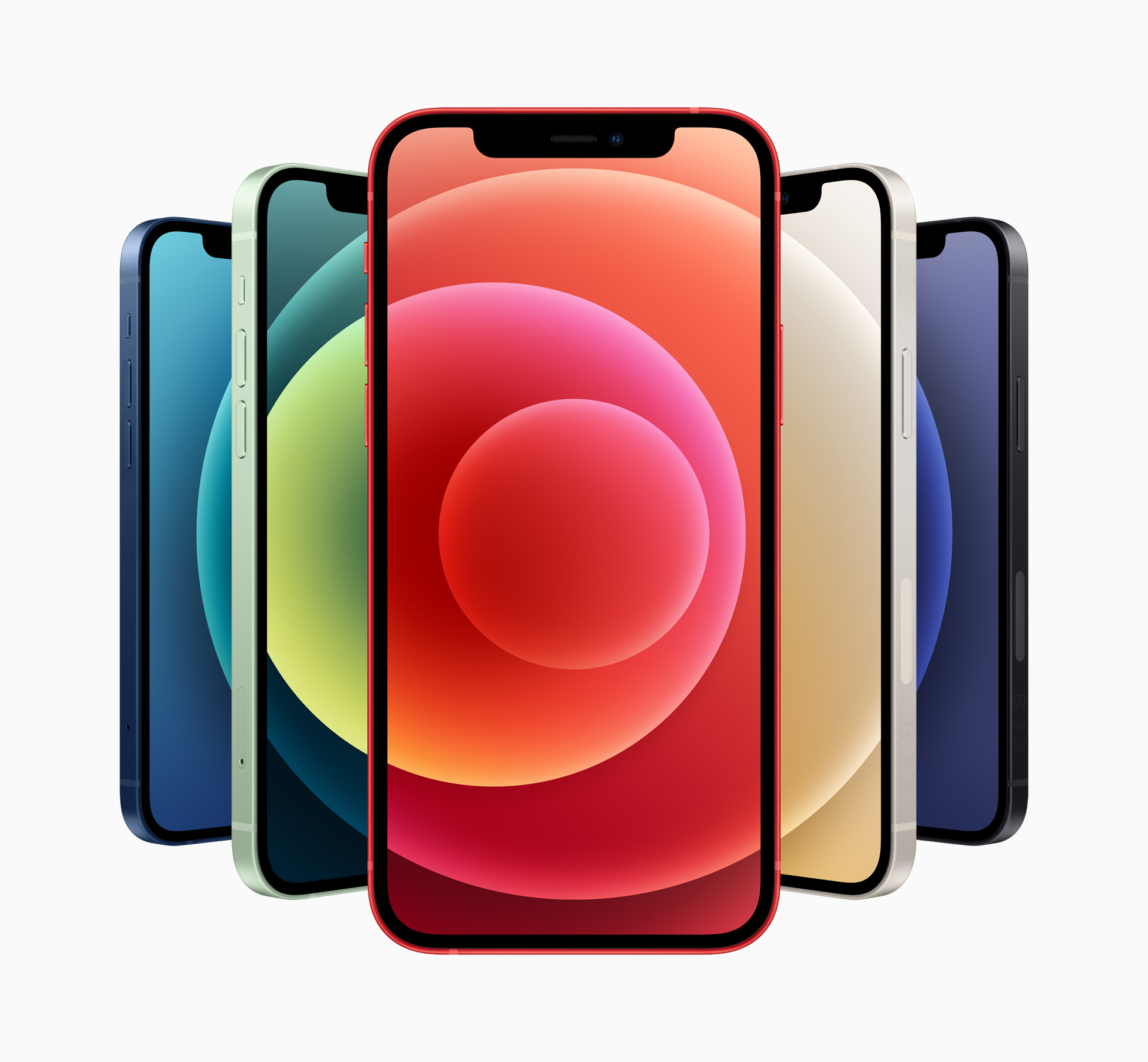Apple have announced four models of their new iPhone 12 and a smaller smart speaker during their third pre-recorded Apple Event overnight.
The phones will be packaged without a power brick and earphones as previously rumoured. The box will only include a Lightning to USB-C cable which has angered many customers as many iPhone users do not own a USB-C power brick.
Older models like the iPhone XR, iPhone 11, and iPhone SE will now also ship without the accessories.
They have stated that this is to reduce their carbon emissions as the retail box can be smaller and less materials will be used. Apple will look to be 100 percent carbon neutral across the whole company by 2030.
A big feature that will see Apple lag behind other competitors is a higher refresh rate 120Hz screen seen on the iPad Pro. The new iPhones will stay at a standard 60Hz refresh rate.
https://www.youtube.com/watch?v=Gz8vBoEFArA
iPhone 12 and iPhone 12 mini
The iPhone 12, Apple’s first 5G phone, now features a flat edge design similar to older iPhone designs. The 6.1-inch phone will come in black, white, blue, green and red and will be priced from $1,349.

The devices will be more durable with the new Ceramic Shield on the front screen which is said to increase drop performance four-fold.
The phone includes a Ultra Wide and a Wide camera lens with Night mode now working on all cameras including the front-facing camera. Night mode will also have a time-lapse option. The camera will be the first smartphones to shoot in Dolby Vision HDR.
The screens will also move from an IPS display to OLED with double the pixels than the iPhone 11.
The new 5nm A14 Bionic chip that powers the phone was shown off with the announcement of the mobile version of the one of the world’s most popular games, League of Legends, which is now coming on iOS devices.
5G on the devices will have a Smart Data mode, meaning that battery life can be prolonged as the phone will switch to 4G LTE when the faster speeds of 5G is not needed.
The iPhone 12 will also come in a smaller 5.4-inch size called the iPhone 12 mini, starting from $1,119, which was dubbed as the “smallest, thinnest, and lightest 5G smartphone in the world”.
The iPhone 12 will be available to pre-order in Australia on Friday with the release slated for 23 October. The smaller version will be released on 13 November with pre-orders starting on 7 November.
iPhone 12 Pro and iPhone 12 Pro Max
The iPhone 12 will also come in a Pro version that will cater to photographers and videographers. The iPhone 12 Pro is the same size as its standard counterpart while the iPhone 12 Pro Max will be the largest iPhone ever with a 6.7-inch display.

The phones are made out of stainless steel instead of aluminium and will come in graphite, silver, gold and blue.
There is the addition of a telephoto lens which differ in both Pro versions with the iPhone 12 Pro Max having a higher aperture and sensor-shift optical image stabilisation. The phone will also include a LiDAR scanner to help with low-light photography and augmented reality.
The camera will also shoot in a new feature called Apple ProRAW which will combine Apple’s image processing with the flexibility that comes with shooting in the RAW format.
The iPhone 12 Pro will start at $1,699 and will be available to pre-order on Friday with release on 23 October. The iPhone 12 Pro Max will start at $1,849 and will be available on 13 November with pre-orders starting on 7 November.
MagSafe
Apple will bring back the MagSafe branding, previously used on MacBooks, to improve wireless charging on the new iPhones. MagSafe will now add magnets to wireless charging for better alignment and efficiency.
This opens up a new ecosystem for accessories like cases or card holders that magnetically attach to the phone. Third-party accessory makers are also creating car mounts that magnetically attach.
MagSafe chargers will still be compatible with Qi-enabled devices.
HomePod mini
A smaller version of Apple’s smart speaker, the HomePod, priced at $149 will look to compete with the similarly sized Google’s Nest Mini and Amazon’s Echo Dot.

While it is a cheaper entry than the larger $469 HomePod, the HomePod mini will be comparatively priced with the higher-end Google Nest Audio and Amazon Echo, both priced at $149.
The 8.5cm tall ball-shaped speaker comes in space grey and white and is covered in a mesh fabric exterior.
It is powered by Apple’s virtual assistant Siri and features touch controls at the top in a display that shows Siri’s waveform animations.
User can also pair multiple HomePod minis to sync audio across different rooms or pair two devices to create a stereo audio system. iPhones can easily send music to the speaker by just moving their phone close to the HomePod mini, the user will also receive a haptic feedback to their iPhone when the transfer is complete.
Bob Borchers, Apple’s vice president of Worldwide Product Marketing, says that the HomePod mini is ultimate smart speaker for anyone in the Apple ecosystem.
“HomePod mini has everything customers want in a smart speaker,” he said.
“There’s a lot of Apple innovation packed into such a small speaker, all at an affordable price.”
The HomePod mini will be available to pre-order in Australia on 7 November with the device coming out on 16 November.
Photo: Photos supplied by Apple.







